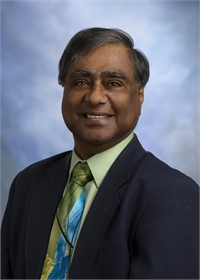Seminars
Thu |
Infrared Detector Applications for Safe and Healthy LivingProf. A. G. Unil Perera, Georgia State University, Atlanta, GA | |
|
Abstract: Infrared detectors and imaging systems are becoming increasingly important in a diverse range of astronomic, military, and civilian applications. In recent years, this field has gained significant attention while incorporating various material combinations and architectures into detector designs with a strong focus on applicability into clinical domains. Here, we will discuss some of our detector structures, their results, and our latest work on disease detection. Our study of the biomedical application of infrared includes exploration of an Affordable, Sensitive, Specific, User-friendly, Rapid, Equipment-free, and Deliverable (ASSURED) diagnostic regimen and testing its clinical feasibility for inflammatory bowel diseases (IBDs) and cancer (Breast, Melanoma, and Lymphoma) screening. Our study using Fourier transform infrared (FTIR) spectroscopy in attenuated total reflectance (ATR) sampling mode, analyzed body fluids in order to identify reproducible, stable, and statistically significant differences in spectral signatures of the IR absorbance spectra between the control and disease samples. These results show that serum samples can be used to detect the biochemical changes induced by these diseases. This technology can be further developed into a futuristic, noninvasive, personalized diagnostic tool for various diseases in which patient-to-patient differences in molecular signatures would allow the assessment of disease status and personalized drug management. Biography: A. G. Unil Perera is currently a Regents’ Professor in the Department of Physics and Astronomy, Georgia State University, Atlanta. He is a Fellow of the IEEE, SPIE and APS. He has served on review panels of the NSF, DOE, and NASA and also as a reviewer for numerous research proposals and papers. He is also a member of the editorial board for the IEEE Journal of the electron Device society. His research focus is on developing detectors responding from UV to FIR range and understanding the IR applications in Disease diagnostics. He has 8 US patents and 3 patent applications, 11 invited book chapters and over 190 publications. He has presented over 80 conference presentations (including ~40 invited and Key Note talks) and over 50 colloquia all over the world. In addition to the professional organization recognitions, he was recognized by Sri Lanka Foundation with its highest award “Life Time Achievement Award” and by GSU awarding most of their research awards including “Outstanding Faculty Achievement Award” and the “Alumni Distinguished Professor Award”. Location: Online Seminar |
